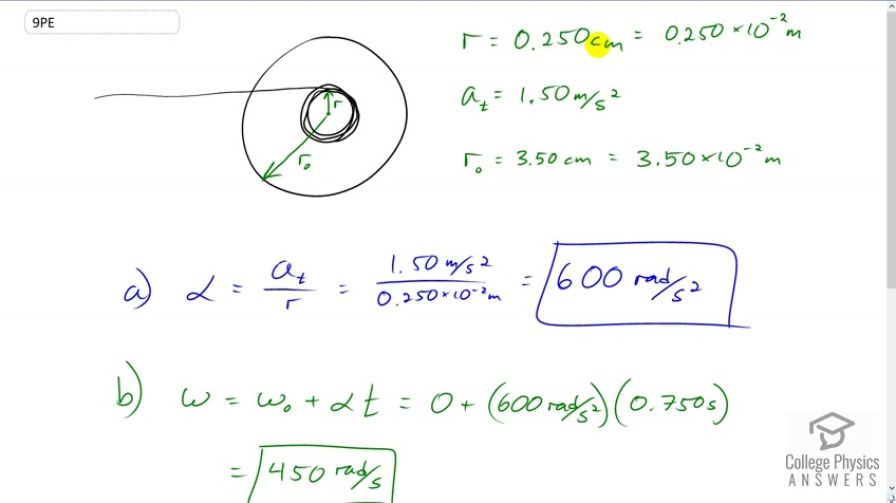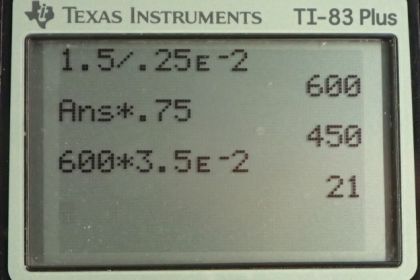Question
Everyday application: Suppose a yo-yo has a center shaft that has a 0.250 cm radius and that its string is being pulled.
- If the string is stationary and the yo-yo accelerates away from it at a rate of , what is the angular acceleration of the yo-yo?
- What is the angular velocity after 0.750 s if it starts from rest?
- The outside radius of the yo-yo is 3.50 cm. What is the tangential acceleration of a point on its edge?
Final Answer
a)
b)
c)
Solution video
OpenStax College Physics for AP® Courses, Chapter 10, Problem 9 (Problems & Exercises)

vote with a rating of
votes with an average rating of
.
Calculator Screenshots
Video Transcript
This is College Physics Answers with Shaun Dychko. We have the inner shaft of the yo-yo here and the string is wrapped around it. It has some radius of 0.25 centimeters which we convert into meters by multiplying by ten to the minus two. There is an outer radius that we'll use for part C to calculate the tangential acceleration of a point on the outside of the yo-yo. The tangential acceleration we're told is 1.5 meters per second squared. That is a point that's right here on the shaft edge. The outside diameter is three and a half centimeters. Now for part A we have to figure out the angular acceleration given this tangential acceleration. So we take 1.5 meters per second squared divided by the radius of the shaft at 0.25 times ten to minus two meters and we get 600 radians per second squared. For part B, we want to know what will the angular velocity of the yo-yo be after it has accelerated for 0.75 seconds. So we take the initial angular velocity of zero and add to that the angular acceleration of 600 radians per second squared, multiplied by three quarters of a second. This gives us 450 radians per second. Then the tangential acceleration of a point on the outside of the yo-yo is going to be its angular acceleration multiplied by the outer radius. So it's 600 radians per second squared times three and a half centimeters and this gives 21.0 meters per second squared.
